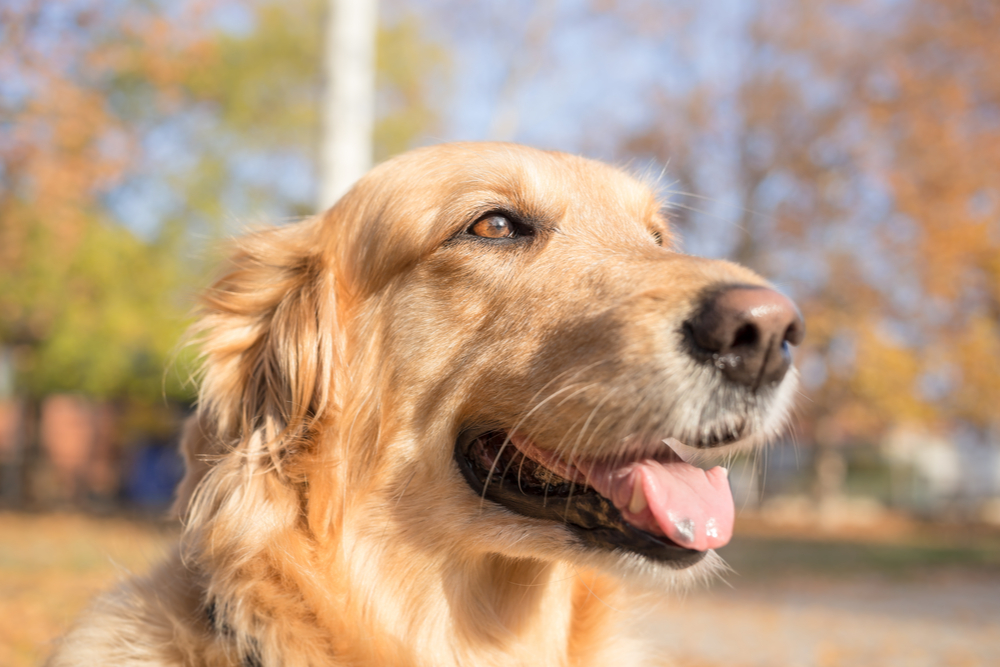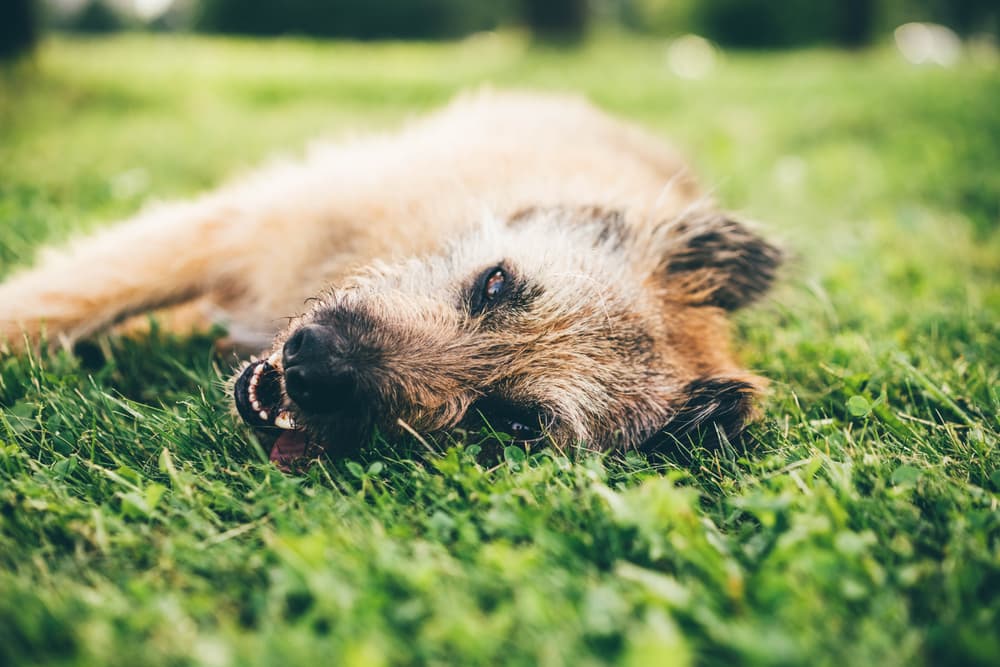Dehydration in Dogs

Overview
- Mild dehydration is usually easy to treat, but severe dehydration can be life threatening to dogs.
- Signs of dehydration include lethargy, inappetence, not drinking water, or increased thirst and urination.
- A physical exam is necessary to assess hydration status in dogs, which can be challenging.
- Dehydration can be treated by providing oral, subcutaneous (under the skin), or intravenous fluids.
- The best way to prevent dehydration in dogs is to monitor them for abnormal behavior and call the vet.
Dehydration in dogs can occur for many different reasons. Water makes up 60 percent of a dog’s body. Normally, water should be able to move in and out of cells and spaces in a dog’s body freely and is regulated by things like a dog’s heart rate, pulse, and blood pressure.
While mild dehydration is usually easy to treat, severe dehydration can decrease normal organ function and be life threatening to our canine companions.
Let’s take a closer look at some of the causes of dehydration in dogs, the symptoms, and how to get your dog help if dehydration occurs.
What is Dehydration?

Dehydration is defined as not adequately retaining fluids or replacing fluids that are lost. Most commonly, fluids are lost via diarrhea and/or vomiting. In this case, a dog’s body can’t keep up with how much fluid is being lost by normal intake and becomes dehydrated.
If left untreated, profuse vomiting and diarrhea can be very dangerous to our dogs. Becoming familiar with signs to watch for and how much water your pet is taking in will benefit their overall wellbeing.
What Causes Dehydration in Dogs?

Several different conditions and situations can cause dehydration in dogs. Most commonly, they include the following:
Hemorrhage
Hemorrhage can occur as both profuse bleeding outside of the body or bleeding inside the body.
Gastrointestinal Issues
Gastrointestinal fluid loss occurs when a dog’s gut doesn’t retain or reabsorb water as food is being processed. This commonly occurs as vomiting and diarrhea.
Urinary Tract Issues
Urinary tract fluid loss occurs from a dog urinating excessively. This could be a sign of kidney dysfunction or other metabolic or endocrine dysfunction.
Certain Diseases

Some common diseases that cause dehydration in dogs include: kidney disease, diabetes, Cushing’s Disease (hyperadrenocorticism), Addison’s Disease (hypoadrenocorticism), liver disease, gastrointestinal disorders or diseases, certain cancers and more.
Lack of Water Intake
A dog with limited access to fresh and clean water may also become dehydrated. Additionally, extreme lethargy or sickness that causes a dog not to drink or eat can result in dehydration.
Heat or High Temperatures
Dehydration could be caused by simply being out on a hot summer day and not providing proper shade or access to fresh cool water. This could lead to heat stroke, which is an emergency that requires immediate care.
Signs of Dehydration in Dogs

Lethargy, inappetence, not consuming normal amounts of water, or increased thirst and urination are some at-home signs that could be related to dehydration in dogs.
Some other signs of dehydration in dogs include:
- Sunken eyes
- Increased heart rate (tachycardia)
- Weak pulse
- Skin tenting (delay in skin retracting to normal)
Pet parents can easily assess hydration status by conducting a skin-tent test. Gently grab your dog’s skin and pull it into a tent shape. If the skin bounces back into place quickly, your dog is properly hydrated. But if the skin is slow to move back into place, your pup may be dehydrated.
If your pet has skipped a meal or two or if they are vomiting or having diarrhea, the dog should be taken in for further evaluation by a veterinarian.
Diagnosing Dog Dehydration

A physical exam is necessary to assess hydration status in dogs, which can be challenging. A couple of key factors veterinarians look for during a physical exam include:
- Skin tent (delay in retractability of skin)
- Mucous membrane color and moisture
- Pulse rate and character
- Capillary refill time (usually assessed by pressing on a dog’s gums and seeing if the color returns in less than 2 seconds)
- Urinary bladder
- Weight
For severely dehydrated pets, a veterinarian may need to run bloodwork and take radiographs (X-rays) in addition to a good physical exam to evaluate for metabolic or endocrine related causes. X-rays can show fluid accumulation in the chest or abdomen. They can also be used to evaluate the size and shape of the internal organs while looking for abnormalities.
How to Treat Dehydration in Dogs

Dehydration can be corrected by providing oral, subcutaneous (under the skin), or intravenous (IV) fluids.
Oral fluids are the least expensive and easiest option, but they unfortunately may not replace fluids as quickly and effectively as intravenous fluids do. For mild cases of dehydration and when other causes have been eliminated, subcutaneous fluids may be a good option. A needle is inserted under the pet’s skin to administer fluids under the skin. IV fluids require a catheter to be placed in the dog’s vein. IV fluids often require hospitalization with hourly monitoring to ensure the catheter stays in place and is functioning correctly.
A pet who is hospitalized will also require once or twice daily physical exams to ensure overhydration isn’t occurring.
What to Do if a Pet Won’t Drink Water

Knowing what is normal for your pet can help you care for them properly. Some options for increasing water intake include:
- Softening dry kibble with water
- Adding no sodium chicken broth to dry kibble
- Offering wet or canned food that is the same formulation of their normal diet
Anytime there is a change in a dog’s diet there should be a slow transition from the old diet to the new diet. Drastic changes can cause gastrointestinal upset and potentially lead to vomiting and/or diarrhea. And while it may be tempting to grab something like pedialyte to increase your dog’s water intake, it’s best to consult your veterinarian first.
How to Prevent Dehydration in Dogs

There are many strategies pet parents can attempt in preventing dog dehydration. The most obvious way is to always provide your dog access to fresh and clean drinking water. You can also encourage water intake with either fresh running water or water fountains.
On days with extreme heat or elevated temperatures, make sure to provide areas of shade and access to fresh clean water.
If you notice that your dog skips a meal or two, this is a good sign your pet is not feeling well and should be seen by a veterinarian. Profuse vomiting, profuse diarrhea, increased thirst and urination are also signs of a pet’s body functioning incorrectly and requires further evaluation.
The best a pet parent can do to prevent dehydration in dogs is to closely monitor them for abnormal behavior and contact their veterinarian if these behaviors occur.









